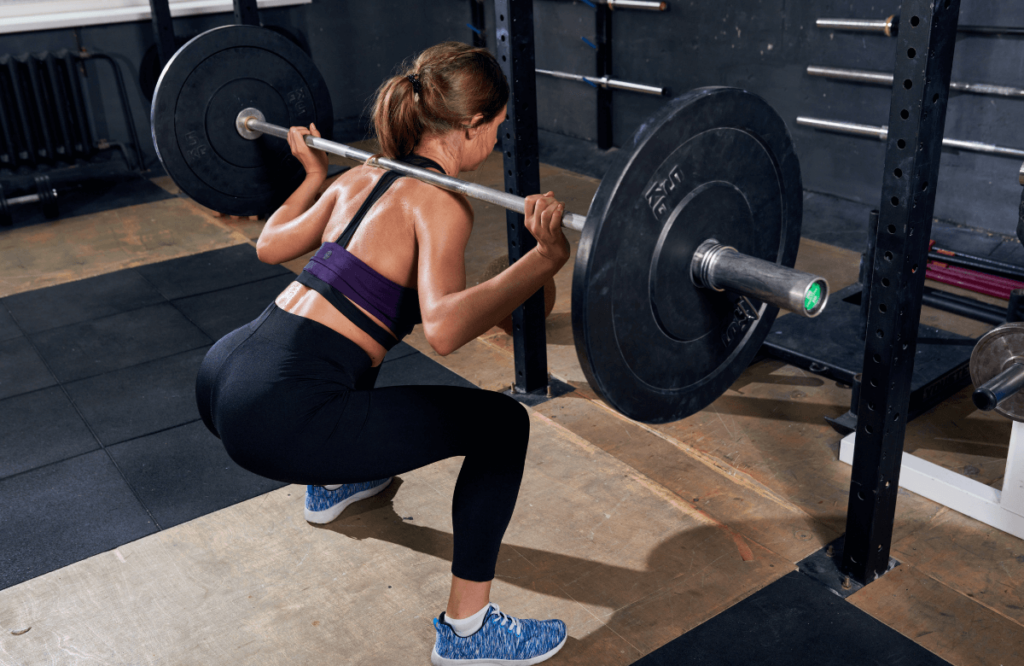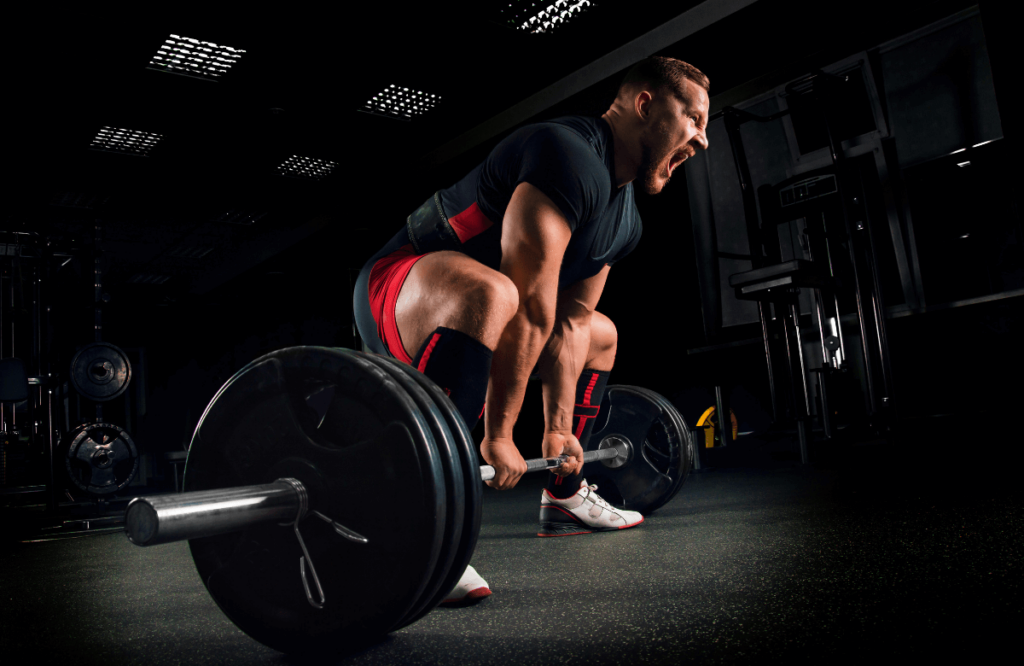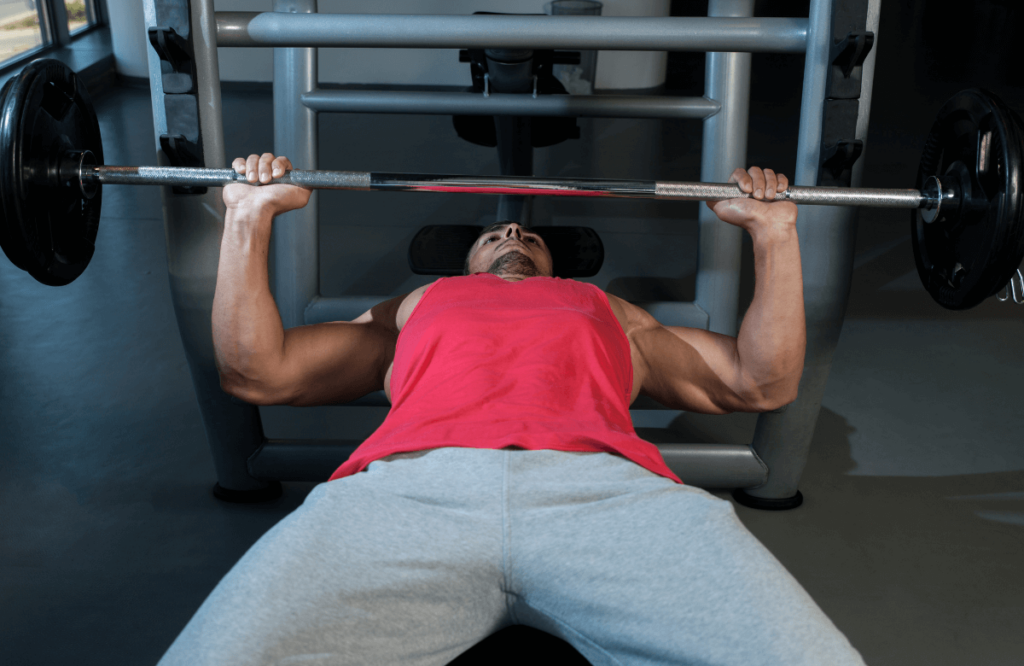Squat, Bench press and Deadlifts are considered to be the three main lifts when it comes to strength and powerlifting competitions.
Every pound matters in this training method, so some individuals focus on working with them almost exclusively.
Although this is effective for building strength and muscle mass in the short term, it could lead to minor issues such as boredom, joint overstress, and a decrease in your overall fitness.
In this article, I’ll cover the squat, bench, and deadlift, and you’ll learn how to build muscle and strength while keeping injury risk at a minimum. Here are some of the topics we’ll cover:
- Benefits and cons of only training squats, bench presses, and deadlifts
- How to program squats, bench presses, and deadlifts
- Mistakes to avoid
Let’s jump right into it!
Jump to:
Benefits of Only Training Squats, Bench Presses, and Deadlifts
Training compound movements can offer multiple benefits for strength, muscle, and overall health, so let’s debate some of them!
1. Focusing On Major Muscle Groups
The main lifts are compound movements (multiples joints at a time) that target different major muscle groups, such as:
- Quadriceps
- Glutes
- Hamstrings
- Pectoralis (chest muscles)
- Lats
The result is increased lower and upper body strength and power from these muscles. For many, this is enough to be strong, healthy, and fit.
2. It may Help Gain Muscle Mass
Strength training is known for pushing the body and central nervous system (CNS) to the maximum. During those high-stress conditions, the body releases testosterone and growth hormone into the bloodstream (particularly during sleep).
Combining these three main lifts while keeping endurance training to a bare minimum will also help you gain muscle mass due to a lower calorie-burning rate.
As long as you’re recovering and eating correctly, the more you focus on strength, the more muscle growth your body will experience.
3. Progress Is Easier To Measure
Training with a powerlifting style makes tracking your progress easier because fewer movements are needed.
Hypertrophy and speed training methods are more diverse and involve multiple variations of the same exercises, which makes measuring more complex.
Advanced lifters are known for having strength journals that record their moves, weights, and even how they felt during the session and recovery. Although this is not a requisite for every type of lifter, it shows how invested some individuals are in measuring their progress.

Cons Of Only Training Squats, Bench Presses, and Deadlifts
Although training only squats, bench presses, and deadlifts has its benefits, it also has its downsides. Let’s cover the three main cons of only doing these main lifts.
1. Your Overall Fitness May Decrease
Focusing only on strength training can neglect other valuable training systems like endurance and hypertrophy, affecting your overall fitness. Look at professional powerlifters; they can lift hundreds of pounds but won’t run a mile.
This isn’t necessarily bad, but it could hinder your body’s ability to explore its limits through different exercises and movement patterns.
2.It’s Easier To Get Bored
Part of the fun of training is its variability and infinite combinations of movements and stimuli. However, when you’re constantly repeating the same exercises, you hit the point of boredom.
The training session becomes predictable, and your mind is no longer looking forward to repeating the same workouts multiple times weekly.
That could directly affect training adherence. You start missing workouts more often, inconsistency increases, and you lose momentum, which keeps you away from your training goals.
3. The Same Joints May Get Overstressed
Hitting the same joints in every workout routine could lead to joint over-stress, which may increase injury risk, primarily because strength training is based on heavy loads.
Adding variations of these movements can be beneficial to avoid overloading the shoulder, knee, and low back joints.

How To Program Squat, Bench Press, And Deadlift For Muscle And Strength
Although there are multiple strength training methods, it’s easy to program for the majority, especially if it’s only three days per week. Below you’ll find a 3-day training split covering the main lifts.
Program Example: 3 Days Per Week
Monday: Max Barbell Squat
A1) 5 reps @7-9 RPE (rate of perceived exertion)
Rest 2-3 min before moving on to B1.
B1) 3 sets, five reps @90% of top Weight
Rest 2-3 min between sets.
C1) Walking Lunges 3×10
C2) DB RDL 3×10
Rest 2-3 min between sets.
Wednesday: Max Bench
A1) 5 reps @7-9 RPE (rate of perceived exertion)
Rest 2-3 min before moving on to B1
B1) 3 sets, 5 reps @90% of top Weight
Rest 2-3 min between sets.
C1) Barbell Rows 3×10
C2) BB Upright Rows 3×10
Rest 1-2 min between sets
Friday: Max Deadlift
A1) 5 reps @7-9 RPE (rate of perceived exertion)
Rest 2-3 min before moving on to B1.
B1) 3 sets, 7 reps @70% of E1RM (estimated 1 rep max).
Rest 2-3 min between sets.
C1) DB Bench Press (3 sets, 10 reps)
C2) DB Bulgarian Split Squat (3 sets, 10 reps)
Rest 1-2 min between sets
D1) DB Bicep Curls 2 sets, 20 reps
D2) DB Tricep Ext 2 sets, 20 reps

3 Mistakes To Avoid When Squatting, Benching, & Deadlifting 3 Days Per Week
If you’re only training your squat, bench, and heavy deadlifts, make sure to avoid the following mistakes so your workout routine can stay as efficient as possible.
I’ll also add a quick solution for each one that should get you on the right path for a more rounded fitness level while minimizing the risk of injuries.
1. Monotony In Training
One of the fastest ways to get bored in strength training is by repeatedly doing the same movements and activity splits. This is a common happening within the powerlifting world. In particular for those who are inexperienced and have no guidance.
Add more accessory movements to complement the main lifts and muscle groups to fix this. Here are some examples of exercises:
- Bulgarian Split Squats (Squat variations)
- Romanian Deadlifts
- Leg Extensions
- Sumo Deadlifts
- Goblet Squats
- Angled Bench Presses
- Pull Ups
- Bird-Dog (trunk muscles)
There are dozens of more variations that should keep your entire body locked in for those three main lifts. You’ll notice after a few weeks that you can lift heavier weights and enjoy your workouts more.
2. Poor Warm Up
The main three lifts are easy movements that even recreational lifters can do on their day 1. This is good and bad. It’s good because it lowers the entrance barrier, which is excellent for getting people moving and working out more often.
On the other hand, skipping a proper warm-up is easier, which might increase injury risk. To fix this, take more time to work on accessory muscles before grabbing the bar.
For example, if you’re bench pressing today, work your traps, lats, rear delts, and overall shoulder mobility. This will reduce the strain on your primary muscles and share the load for more explosive strength.
Same scenario with the squats and deadlifts; focus your warm-up on ankle mobility, core muscles, hip and knee joint, glutes, and spinal erectors.
Following a well-rounded warm-up will prolong your training span keeping injuries at bay and getting you closer to your fitness goals.
3. No Deload
A “deload” means lowering the frequency of training, volume, and intensity of your training loads for a week or two. This is where your muscles, joints, and central nervous system (CNS) take a break to adapt, recover, and bounce back.
A strength program without a deload is dangerous, even for advanced lifters. After a while, this could lead to fatigue, injuries, and plateaus (Weight not going up).
A simple method to fix this is adding a deload every 4-6 weeks depending on the training goal and fitness level. For example, a beginner powerlifter could need a deload every three weeks because his body is not used to the training volume.















